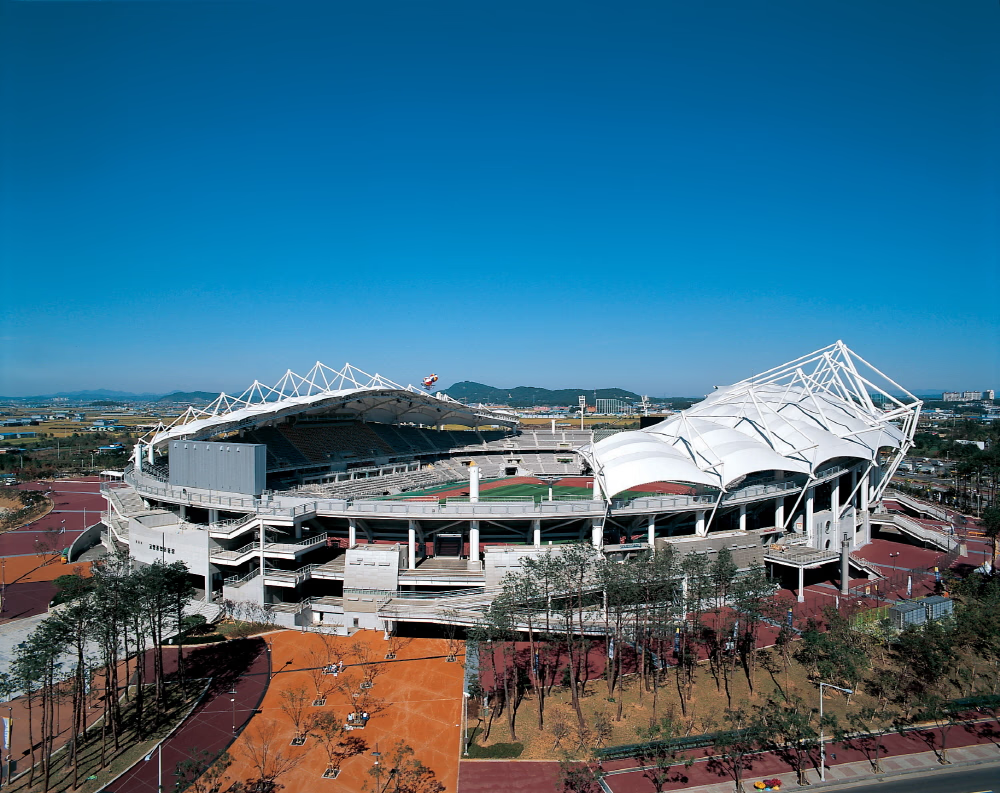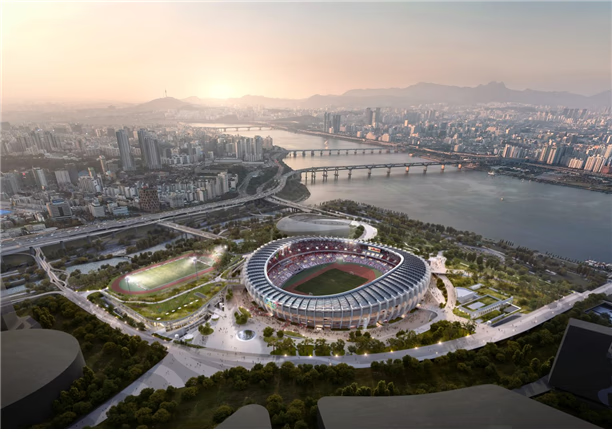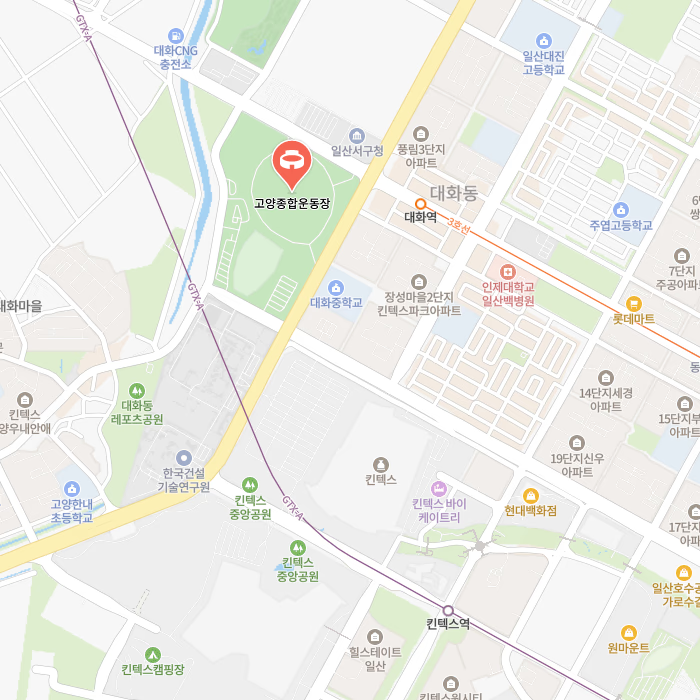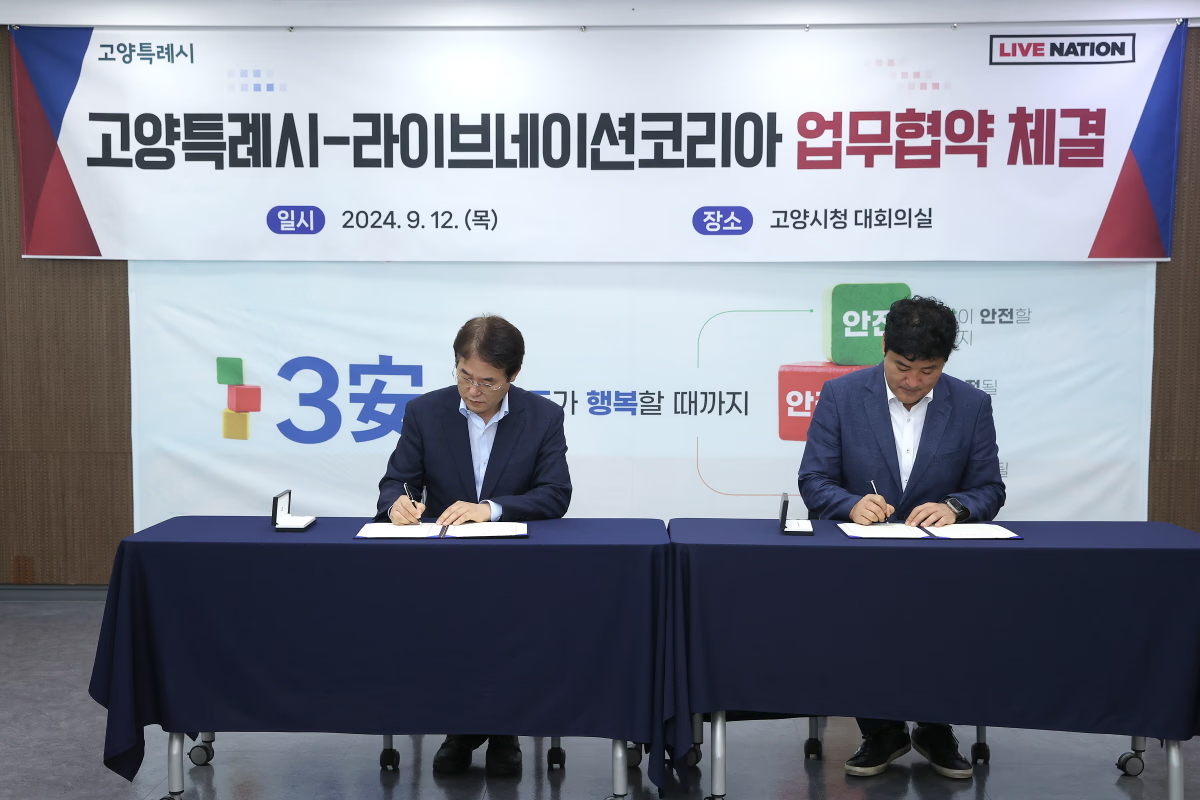
In recent years, a noticeable shift has been underway among music fans. When news breaks about massive world tours by global pop stars or top-tier K-Pop groups, an unexpected name keeps popping up as the venue: Goyang Sports Complex, located in Goyang City, Gyeonggi Province. How did this place, largely overlooked for anything beyond sporting events until recently, suddenly become a sought-after concert destination for both domestic and international artists? The absence of Jamsil Olympic Stadium, combined with several other factors and Goyang City’s proactive efforts, has played a crucial role.
⛈️ An Opportunity Born from a Shifting Concert Landscape

Ironically, the biggest factor behind Goyang Sports Complex’s rise is the lack and limitations of large-scale concert venues within Seoul. Jamsil Olympic Stadium, long considered the symbolic home for massive concerts accommodating over 50,000 people, is currently closed for major renovations expected to last until 2026. Another alternative, Seoul World Cup Stadium, increasingly faces hurdles for concert bookings. Soccer schedules take precedence, and concerns over turf damage after concerts lead to hefty penalties and negative public opinion, making it a tricky option.
The indoor venue situation isn’t much better. Only the KSPO Dome (formerly Olympic Gymnastics Arena) at Olympic Park and Gocheok Sky Dome are realistically capable of hosting large indoor crowds. Booking the KSPO Dome is notoriously difficult, often described as “plucking a star from the sky” due to intense competition. Gocheok Sky Dome, primarily designed for baseball, often draws criticism for suboptimal sightlines and acoustics compared to dedicated concert halls. Especially with the post-pandemic explosion in global tours and the ever-increasing scale of K-Pop concerts worldwide, Seoul’s existing infrastructure has hit its limits. This supply crunch created an urgent need for alternatives, and Goyang Sports Complex emerged as a strong contender precisely at this moment.
🏆 A Prepared Contender: Goyang City’s Hidden Strengths

Goyang Sports Complex wasn’t just filling an empty slot; it already possessed attractive qualities as a concert venue, allowing it to seize the opportunity. First, its seating capacity of approximately 41,000 is ample for large-scale performances. Furthermore, its excellent accessibility from both Incheon International Airport and Gimpo Airport is a significant advantage, easing travel for international artists and their crews and proving beneficial for equipment transport and logistics.
Transportation convenience is another key factor. The complex is adjacent to Daehwa Station on Subway Line 3, and the recent opening of the GTX-A line has drastically reduced travel time from the Gangnam area of Seoul, significantly lessening the burden on attendees. Crucially, Goyang City lacks a resident professional sports team using the stadium, meaning scheduling is relatively flexible. This ability to utilize the stadium according to concert schedules without complex stakeholder negotiations is an invaluable asset for artists and promoters juggling tight world tour itineraries. These combined geographic, physical, and operational advantages positioned Goyang Sports Complex as a ‘ready-made alternative’.
🤝 Turning Potential into Reality: Goyang City’s Strategic Moves

However, favorable conditions alone don’t guarantee success. The current achievements wouldn’t have been possible without Goyang City’s swift decisions and aggressive recruitment efforts. The city identified the concert industry as a new growth engine and moved decisively with the clear goal of transforming Goyang Sports Complex into a ‘global performance hub’.
The most striking initiative has been its supportive policies. To attract concerts, the city drastically reduced the stadium rental fee from 10% of total ticket revenue to 6% and spared no effort in providing administrative support, including prioritizing booking dates. This significantly lowered the financial burden for concert promoters, making Goyang Sports Complex a more appealing choice. Additionally, the city increased budgets for concert-related initiatives and focused on enhancing expertise and building partnerships, such as signing a Memorandum of Understanding (MOU) with the global concert promoter Live Nation Korea. This demonstrated a commitment beyond simply renting out a facility, aiming to provide ‘one-stop service’ for successful event hosting, including noise reduction measures, securing spectator flow routes, and supporting transportation and safety management. Actively pitching the venue to promoters through business briefings was also part of this strategy.

The results of these efforts have been remarkable. World tours by top K-Pop groups like Enhypen and Seventeen, as well as highly anticipated concerts by global superstars like Coldplay, have been secured one after another. The fact that Coldplay scheduled six shows in Goyang during their world tour – the most after London’s Wembley Stadium – particularly signals that Goyang Sports Complex is starting to be recognized not just as a substitute, but as a major venue in its own right. These large-scale concerts are more than just cultural events; they attract hundreds of thousands of domestic and international visitors, significantly boosting the local economy.
✨ The Road Ahead: Challenges and Prospects for a Sustainable Concert Hub
Goyang Sports Complex is clearly shaking up the K-Pop and global concert map in Korea. Its immense popularity, with the 2025 schedule already nearly fully booked, signifies that Goyang City has laid a strong foundation for its leap towards becoming a ‘global concert hub city’. Could Goyang Sports Complex potentially become a regular stop on world tours, joining the ranks of LA’s SoFi Stadium or London’s Wembley Stadium?
However, sustaining this success requires addressing remaining challenges. The primary weakness is its nature as an outdoor stadium, making winter concerts difficult due to seasonal limitations. There’s also a need to continuously develop concert-optimized infrastructure and operational systems, moving beyond its identity solely as a ‘sports facility’.
Furthermore, a long-term perspective is needed, looking beyond simply hosting big shows. This includes developing diverse cultural programs linked to concerts, finding ways to coexist harmoniously with local residents, and nurturing and attracting specialized talent for the concert industry. As experts point out, a true ‘concert city’ is built not just on hardware (facilities) but also on the software (content) that fills it and the supporting ecosystem. The suggestion for a dedicated organization to manage the concert hub initiative arises from this context.
The rise of Goyang Sports Complex is a result of a convergence of factors: the vacuum in the Seoul metropolitan concert infrastructure, Goyang’s own geographic and facility strengths, and the city’s proactive strategy and efforts. Goyang is evolving from merely a satellite city into a new representative cultural center for South Korea, a ‘hotspot’ drawing attention from K-Pop and global music fans. If it wisely navigates the remaining challenges and continues its investments, Goyang Sports Complex possesses ample potential to stand shoulder-to-shoulder with world-renowned venues and write a new chapter in the history of live performance in Korea. We look forward to seeing which artists will grace the stage at Goyang Sports Complex next.